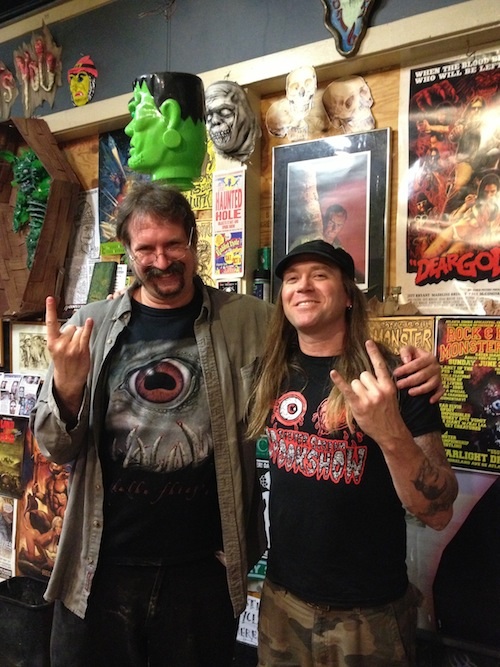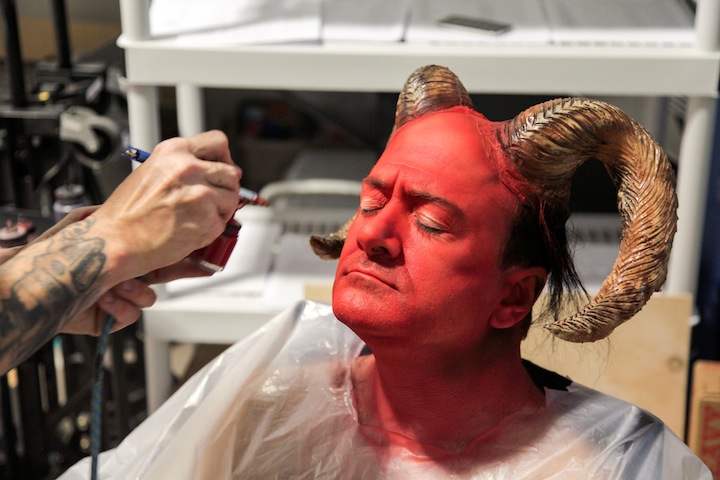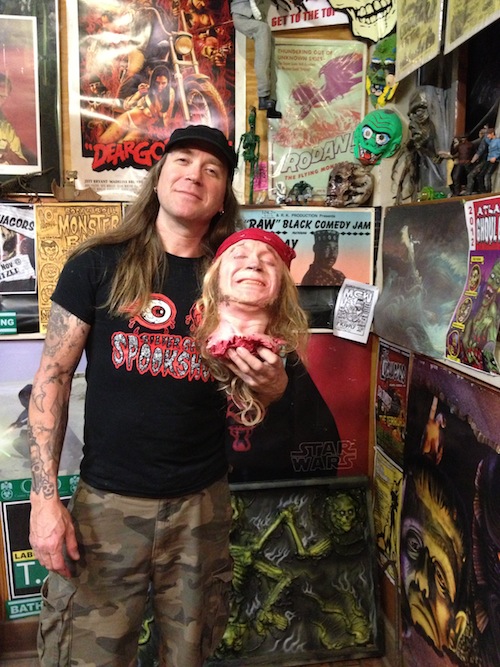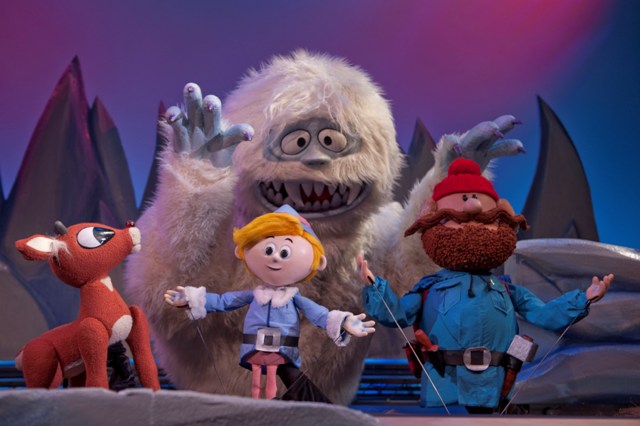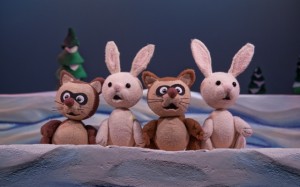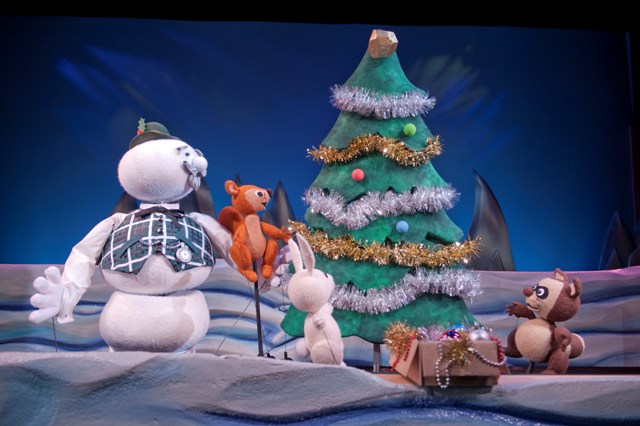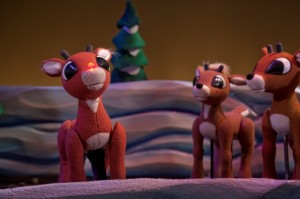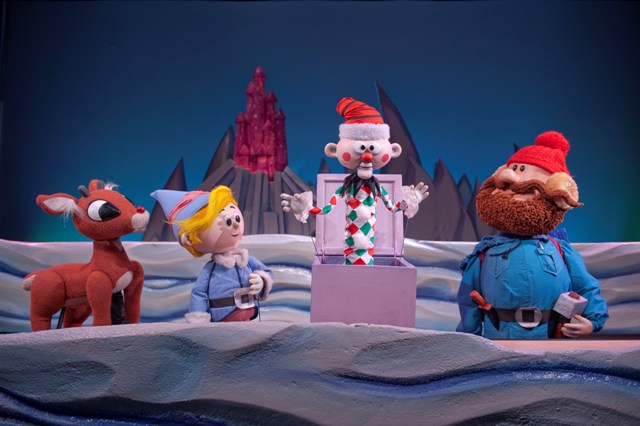When Shane Morton, aka Atlanta’s Renaissance man of horror, and Chris Brown, mad mastermind of Macabre Puppets and the bloody musical SCARLET’S WEB (Dad’s Garage), first got involved with Adult Swim‘s YOUR PRETTY FACE IS GOING TO HELL, they immediately realized this grotesque and groovy gig was their dream, or should we say nightmare, job. The initial assignment was special effects makeup, but the show didn’t have an art director yet. It’s a story Shane has already told colorfully in several articles, but he asked them for a couple of days to film a make-up test to prove the pair could transform humans into demons in 45 minutes, then he got to work on sketches and models. Being old-school Ray Harryhausen fans, Shane and Chris wanted to do as much as possible with miniatures, but budgets and technological advances dictated a balance between digital effects for lava flows and heads spinning like Linda Blair and the old ways for blood spurts and HR Geiger-esque urinals. Still, the pair didn’t have to do much to convince everyone to let them take over much of what perhaps a little ironically is called the “practical” effects for the series.
“Maybe we were thinking too much about that,” Shane says, speaking about his passion for traditional effects from the monster FX Lab he’s built south of the city at the Atlanta Zombie Apocalypse. The undead Halloween attraction is one of many horror events he has nurtured locally and is a big force behind the transformation of Atlanta into Halloween-town, USA. “We did sculpt and cast all the horns themselves,” he continues. “We didn’t want to be just painting people red and sticking horns on them, and we didn’t want anything store-bought.”
Ever since the Middle Ages, comedies about deals with the Devil have proven a surefire hit. Think about such Retro cult classic movies as BEDAZZLED (The 1967 version, of course, starring Peter Cook and Dudley Moore) and POOR DEVIL (TV, 1971), starring Sammy Davis Jr. and Christopher Lee). YOUR PRETTY FACE IS GOING TO HELL mixes in-your-face crassness and generous gore with office comedy, reimagining Hades as a contemporary cubicle-ridden setting. Demon Gary (played by Henry Zebrowski) is dedicated but far too much of a screw-up to earn a promotion. Yet it’s hard not to empathize with the well-meaning “associate” because we all like to complain about our bosses, but his, well, has to be worst because it’s Satan. The original live-action series is created and directed by Dave Willis (AQUA TEEN HUNGER FORCE, SQUIDBILLIES) and Casper Kelly (SQUIDBILLIES, HARVEY BIRDMAN: ATTORNEY AT LAW; STROKER & HOOP). The final installment of the six-episode run airs this Thursday May 23, 2013, at midnight.
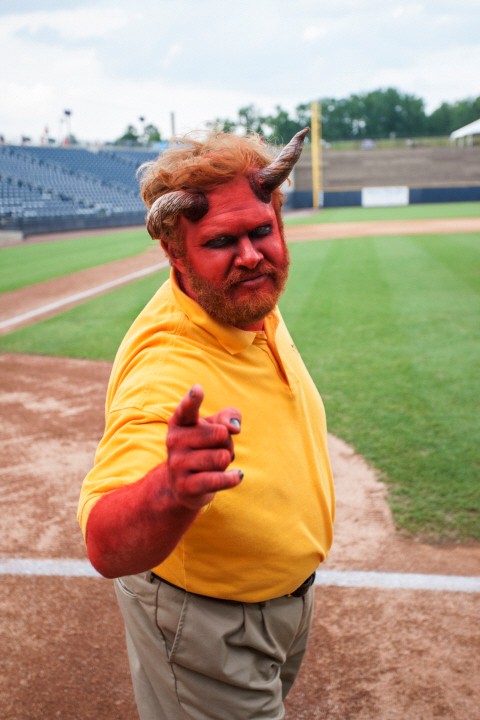
Henry Zebrowski stars as Gary the demon in YOUR PRETTY FACE IS GOING TO HELL. Photo courtesy of Adult Swim.
At the Silver Scream Spookshow, Shane’s homage to Retro spook shows of old, he regularly performs magic tricks as Horror Host with the Most Professor Morte. Whether transforming humans into monsters with make-up, conjuring up crazy sets or engineering a splattery gross-out nosebleed, Shane views his effects work equally as magic. A consummate showman, he “performs” for the crew and ultimately the TV audience. “When there is special effects stuff going on, everybody wants to be around to watch it,” Shane says. “You’re getting to see the trick in the magic trick. You’re getting to peek behind the curtain.”
Part of the magic on YOUR PRETTY FACE was having to be prepared for the unexpected every day on the set. The script served only as a loose guide because a great deal of improvisation happened, too, Shane says. With that in mind, he kept a “library of prosthetics” on set. At the AZA Lab prior to shooting, he crafted multiple “wounds and hanging eyeballs and sets of teeth, because you never know what these people are going to ask for.”
Shane and Chris started each day by getting the cast into make-up. As simple as it may seem to paint someone red and stick on horns, Shane notes that because the body is organic–yeah, people sweat and rub against things–there’s a nonstop need for reapplication. “We were constantly touching up their noses, painting in their ears, touching their beards up, molesting them all day long,” Shane says. “You have to get intimate.”
That process became trickier when on location, such as for the third episode, “Take Life By the Horns,” in which Gary found himself fallen into a ravine. That shoot involved dodging poison ivy and copperhead snakes and having to rappel camera equipment down the side of a mountain, Chris recalls.
After make-up, the pair would launch into preparing the special effects and any additional props needed for the day. Sometimes that could be blood or pus or a potion of extreme projectile vomit, also needed for the ravine shoot. “We had a limited amount of time, so I literally used a sump pump, like you use to bail water out of your basement,” Chris says. “I put together a big plunger and a giant syringe, and then opened the nozzle to spew out a rainbow collection, which included stew, cream of mushroom soup, I made some gelatin and crunched up into chunks. The smell quickly turned rancid so it even smelled like vomit.” In addition, Gary broke his leg from the fall down the cliff, and Chris had to create nauseating pus to spew from the wound. Yes, it did involve black blood, red blood and tapioca pudding!
Shane and Chris are used to working wonders on a tight budget and schedule whether it’s for local theater or DEAR GOD! NO!, an over-the-top neo-exploitation movie involving bikers, Bigfoot and a Nazi mad scientist which scored awards at grindhouse festivals across the nation. While the budget was not huge for YOUR PRETTY FACE, it was much larger than the typical indie which allowed such treats as Chris was crafting Satan’s legs out of actual yak fur rather than a used gorilla suit. “The original talk was that Satan would be fat, over-the-hill, and extra lecherous like the demon in LEGEND (1985) as if time has caught up with him,” Shane says. “We were really gung ho for that, but we loved the look he ended up with.”
A secret ingredient underneath Satan’s furry legs was spandex tights, that could easily be changed out if Matt Servitto, the actor who plays Satan, felt sweaty. A lycra lining gave four-way stretch which, as Shane notes, even allowed Matt to do David Lee Roth kicks in a photo shoot. As for costume maintenance, well, “it was like combing out a big dog,” Chris says.
Perhaps Shane’s favorite set pieces are the aforementioned H.R. Geiger-esque urinals, the bowls of which needed to accommodate the heads of demons who displeased Satan. Yeah, he pees on them, including sometimes poor hapless Gary. Originally they were supposed to be clean, standard urinals, but then Shane had the crazy idea to make them scary: “Everything in hell is monsters, so let’s make the urinals monsters, too!”
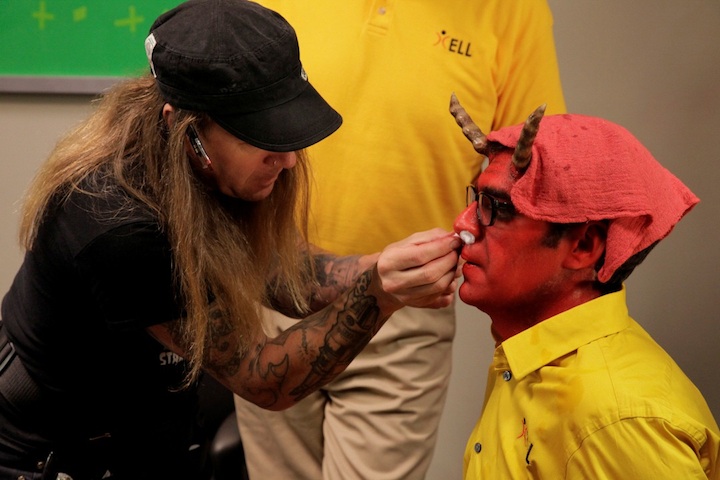
Shane Morton at work on Claude (Craig Rowin), Gary's over-dedicated intern in YOUR PRETTY FACE IS GOING TO HELL. Photo courtesy of Adult Swim.
Shane went home and crafted a miniature model, brought it in, and got the greenlight to create a urinal that looks like an extra-large facehugger. He toyed with various color ideas but finally decided that the bathrooms otherwise would be spotless in Hell.
The demonic duo were impressed that the show really did follow through with Satan actually peeing on the demons’ heads. Of course, even with a program that prides itself on shock value, some things inevitably didn’t make the final cut. For example, Satan won’t poop on Gary’s face, even though the scene was filmed. “It will end up on DVD maybe,” Shane says hopefully. “Somebody getting pooped on or an arm hacked off is a good day at work! It keeps the energy up.”
Satan’s office is packed with props created by Shane and Chris, though it is not perhaps quite the devilish “greatest hits” collection that they originally envisioned. Instead of the trophies and plaques that have become de rigeur in executive offices, Shane wanted to include on the shelf Eve’s apple, Christ’s crown of thorns and Hitler’s head in a jar. And clearance couldn’t be gotten for Wall of Shame photos of Satan flashing a big grin with dubious celebrities such as David Hasselhoff and the Octomom. Still, those who look carefully will see many subtle Shane and Chris touches such as faces of tortured souls on the steel balls that click back and forth on the Devil’s desk. “Everything is pumped up a little bit because after all we are in hell,” Shane says. “Even the elevator switch looks like something scary.”
In other words, Shane and Chris had one of a helluva good time. At an apartment location, some little old ladies told the crew “they were going to pray for us because we were doing the devil’s work,” Shane says. “We joked every day and maybe it did get a bit old but ‘it’s really hell getting all this done today!’”
As the season draws to a close, the pair are now just waiting to hear the final ratings and whether the show gets greenlit for a second season. If yes, they’re hoping for a bigger budget and the chance to play around more with more practical special effects over CGI–“to raise the bar,” as Chris says. “If we end up getting multiple seasons, it’s only going to get more extreme,” he adds. And maybe there’ll even be a cameo for that giant spider with the humungous nut-sack hanging on his back that turned out to be expensive to cast.
In the meantime, Chris will be working on the script for a $3-4 million movie version of SCARLET’S WEB. And Shane recently wrapped the indie feature, TALES FROM MORNINGVIEW CEMETERY. In it, he appears as Professior Morte, fulfilling the Cryptkeeper role, introducing the segments and holding the show together. He’s also involved in preproduction with director Jimmy Bickert for FRANKENSTEIN CREATED BIKERS, the much-anticipated sequel to DEAR GOD! NO! It will be filmed in 35mm widescreen hopefully by the end of 2013, he revealed, and include a lot more special effects and monsters. Look for Shane, or rather his Professor Morte alter-ego, at the 11th Annual Rock n Roll Monster Bash at the Starlight Six Drive-In on Sunday June 2. The movies this year are THE DEVIL’S RAIN (1975) and EVIL DEAD 2 (1987), not to mention six bands, scary shopping and Monstrosity Championship Wrestling! [ED. Note: Watch for Retro Reviews of both movies next week]
Editor’s Note: Shane and Chris are just a few of the talented local folk streaming by in the end credits of YOUR PRETTY FACE. More ATLRetro friends include producer Linda Burns (V/H/S, THE SIGNAL), set decorator/property master Laurie Garner, who’s played bass in so many Atlanta bands (She-Monster and Vietnam to name a few), and the indomitable Eddie Ray (SATANIC PANIC BAND OUT OF HELL and a previous Kool Kat to boot!).
ALSO: Learn some of the make-up secrets Shane Morton used in YOUR PRETTY FACE IS GOING TO HELL at his Monster Make-up Class on Sunday May 26 in his Lab at AZA. For more details, visit the Facebook Event Page here.

